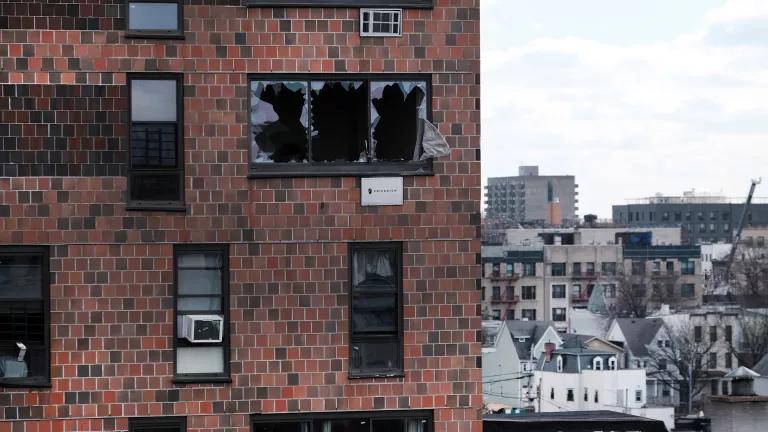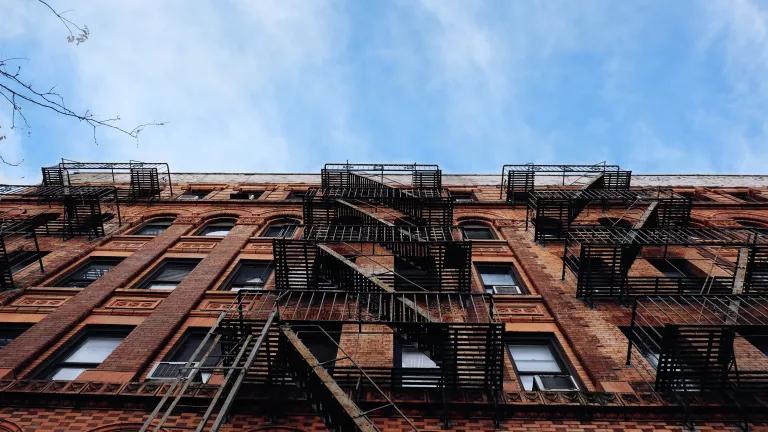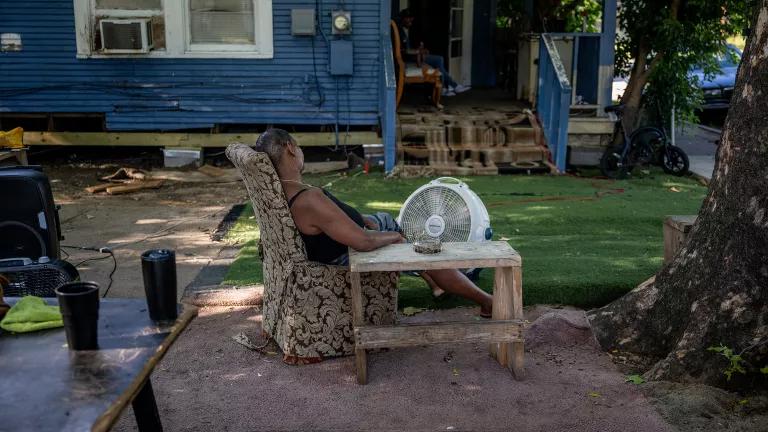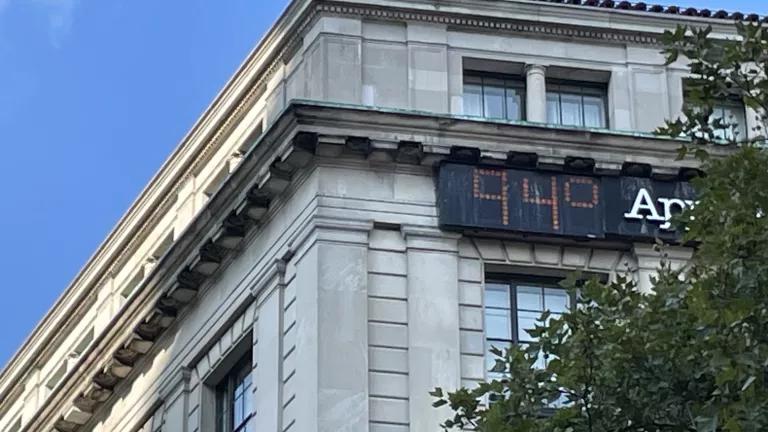Preventing Fire Deaths Demands Confronting Energy Insecurity
The horrific fires in Fairmount and the Bronx are a wake-up call: We need to take bold action to confront energy insecurity.

The smashed windows of a Bronx apartment complex where, on January 10, 2022, a fire sparked by a space heater killed 17 people and injured dozens more.
Catastrophic events often reveal systemic injustices. This is certainly true of the horrific fires in Fairmount, Philadelphia and the Bronx, New York that claimed the lives of 29 individuals, including 17 children, in the first week of 2022. As others have compellingly argued, the Fairmount and Bronx fires exposed deep inequities in the country’s housing system—inequities produced by racist zoning and lending policies that have pushed households of color into lower-quality housing, affordable housing policies designed to serve the interests of investors rather than the needs of residents, and decades of disinvestment in public and truly affordable housing. In other words, the fires were both a tragedy and a profound injustice.
The concept of energy insecurity can help us better understand why low-income and racialized communities are more likely to suffer disasters like the Fairmount and Bronx fires—and what can be done to change that. Energy insecurity can be defined simply as an “inability to meet basic household energy needs.” A household may experience energy insecurity in various ways, including economic hardship in paying utility bills, uncomfortable home temperatures due to drafty and poor quality housing, or the need to forego food or medicine to meet home energy costs.
Around one in three households in America experience some form of energy insecurity. The number is higher for Black households and other households of color, even when accounting for income.
Energy insecurity is directly tied to an increased risk of fire-related death and injury. Households experiencing energy insecurity are often forced to rely on alternative heating sources, such as space heaters, to maintain comfortable home temperatures. The dangers of space heaters are significant and well known; a recent report by the National Fire Protection Association found that of the 19 percent of reported fire deaths that were caused by home heating equipment, 81 percent involved stationary or portable space heaters.
Beyond the acute risks of fire, energy insecurity can also have serious long-term impacts on residents’ mental and physical health. Studies have linked energy insecurity to chronic stress and a range of adverse health outcomes, especially for residents with underlying conditions such as asthma.
Energy efficiency as a (challenging) pathway to energy justice
The close connection between energy insecurity and fire risk suggests one policy intervention that may be particularly effective in reducing the risk of disastrous fires: home energy retrofits. Home energy retrofits encompass a range of measures to reduce energy use and increase efficiency while maintaining a comfortable living environment, including upgrading to more efficient appliances and lighting, installing “smart” heating and cooling systems, and structural upgrades to building envelopes such as insulation and air sealing. These measures can lower and stabilize energy bills while significantly improving thermal comfort, eliminating the need to resort to dangerous alternative heating sources such as space heaters.
The potential of home energy retrofits to address energy insecurity has led some advocates to call for expanded access to energy efficiency as a pathway to energy justice. Complicating this pathway to energy justice is the fact that many energy efficiency programs struggle to reach the households most likely to experience energy insecurity.
Lower-income households and households of color are more likely to live in older, lower-cost housing that may require structural repairs or removal of health and safety hazards (such as lead paint or asbestos) before weatherization measures can be installed—costs that often are not covered by existing weatherization programs. To obtain support, households often must navigate a labyrinth of programs, each with their own complicated eligibility requirements and application processes. Barriers such as these create a “service mismatch” between the way that efficiency programs are designed and the needs of vulnerable households.
A more basic problem is the lack of funding. Government-funded weatherization programs for low-income households are massively underfunded—according to a recent analysis, the federal Weatherization Assistance Program manages to serve only 0.2% of potentially eligible households each year.

Breaking free of energy insecurity
Meaningfully addressing energy insecurity will require bold new approaches to delivering home energy retrofits to vulnerable households. One promising idea is to use geographic and demographic analysis to target program delivery to areas likely to experience energy insecurity, such as communities of color or environmental justice communities. Geographic targeting can be combined with a community-based delivery model, in partnership with trusted local institutions, to better reach households in need.
State policymakers are also advancing innovative ways of better aligning program delivery with community need. In Pennsylvania, for example, state Senator Nikil Saval has announced proposed legislation that would begin to plug the gaps in existing federal, state, and local programs by providing flexible funding for home repairs that present barriers to weatherization upgrades. Critically, the bill would also provide funding to hire navigators to help match households to programs that meet their needs.
The bottom line, however, is that governments need to dramatically increase investment in low-income home energy retrofits. So far, Congress has taken only meagre steps in this direction. The recently enacted infrastructure law will deliver a one-time $3.5 billion boost to the federal government’s low-income weatherization program for 2022—a six-fold increase over typical annual funding, but far below the need. The Build Back Better Agenda contains more ambitious investments, including new funding for removal of health-and-safety hazards and for energy efficiency, weatherization, and other climate-related upgrades in privately-owned affordable rental housing. If adequately funded and properly designed, programs such as these could effectively combat energy insecurity and reduce fire-related risks.
A wake-up call
The horrific Fairmount and Bronx fires should be a wake-up call for policymakers at all levels of government. Avoiding more fire deaths will require bold action to confront housing and energy insecurity, including by dramatically scaling up investment in low-income home energy retrofit programs.
To paraphrase a well-known scholar of climate disaster: we have collectively created the conditions that made it possible for so many to die in the first week of 2022. We can unmake them, too.



